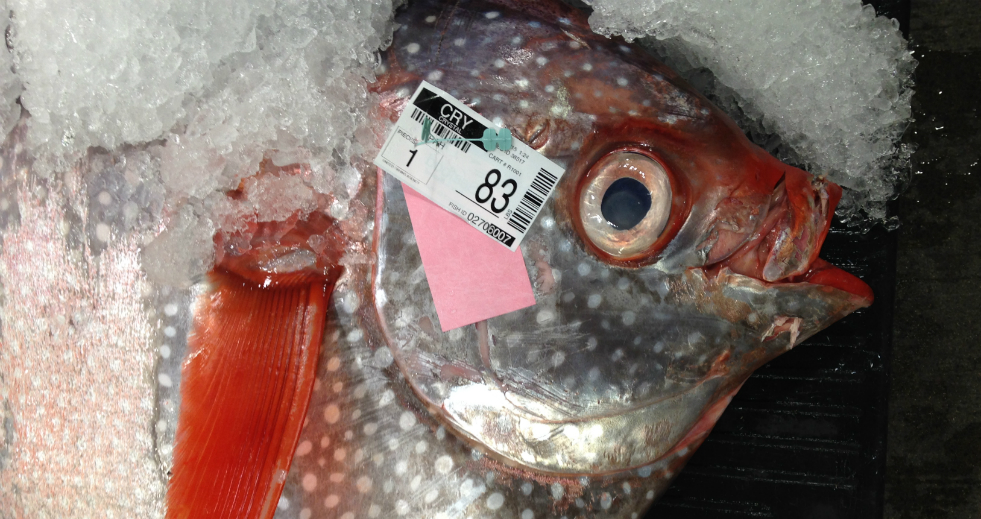
By Crystal Sanders
Most Hawaiian vacations involve cocktails and beach time, but being a serious fish nerd I spent three early mornings at the Honolulu Fish Auction.
I was there to meet a shipper who sent me tuna that a fishermen friend of mine had caught in Hawaii. I also wanted to see what happens when the buyer sets the price for individual fish based on quality instead of wholesalers setting the price that fishermen receive.
The seafood supply chain has been notoriously opaque, but collecting and transferring traceability information about fish is possible. I saw it happen at the Honolulu Fish Auction. Unlike other fish auctions, this one is open to the public. Anyone can buy fish by picking up a personal tag at the front desk.
Boats arrive in the harbor behind the auction house to begin unloading at 1 am. Fish get transferred from each boat onto a numbered cart. Then they are individually weighed and inspected for quality.
Each fish receives a printed label with an ID number, bar code, the date, the receiver’s ID number, the cart number, species name, vessel name, weight of the fish, and for larger fish like swordfish, how many pieces it was sawed into.
What a pleasant surprise: Here’s the traceability information that consumers crave. While this valuable info is usually lost after the fish leaves the auction house, I am confident that could change by using the auction house’s approach as a model. Making this info available to consumers could actually increase the price they receive because consumers are willing to pay for traceability.
Standing in the auction house felt like being in a huge refrigerator. The cold environment keeps fish quality high. Labels attached, the fish were placed on iced pallets that lined the auction floor. Contrary to what you might imagine, there was no fishy smell — that’s how fresh the fish are. For certain species, a piece of the tail was displayed to show color, fat content, and meat quality.
The auction bell rang at 5:30 am. This sound made me imagine the frantic energy of the opening bell on Wall Street, but here it seemed I was the only one excited. I joined a group of buyers — all men — gathering around rows of fish. The auctioneer began announcing the prices so quietly that I could hardly hear him.
Once a winning bid was reached, the auctioneer wrote the final price on a piece of paper and threw it on top of the fish. The winner placed his company tag next to the paper. After the group moved down the line, an auction house worker scanned the fish’s barcode into a computer. He entered the price per pound and printed the final price tag, officially assigning the fish to the buyer.
Following the auction, workers rolled the fish outside. Buyers loaded their fish into iced totes or piled the fish in the backs of large trucks. In the span of my three-day visit, nearly 270,000 pounds of fish got unloaded. That’s about the same weight as 45 heavy-duty pickup trucks.
The auction house offers organized tours twice a week so if you’re in Honolulu and want the best quality fish for low prices, I recommend a visit. To give you an idea, tuna was selling for $4 to $5 per pound.
While in Hawaii, I actually did spend some time on the beach with a cocktail. And yet watching traceability become reality at the auction house was just as refreshing.
Crystal Sanders is the founder of Fish Revolution, a nonprofit in the San Francisco Bay Area that assists restaurants and businesses with incorporating seafood sustainability into their business models.
Published Feb 26, 2015




